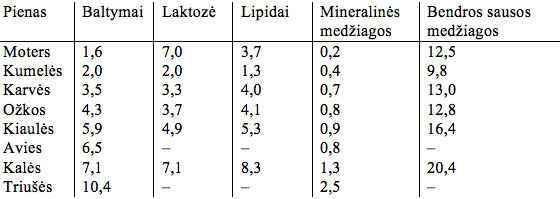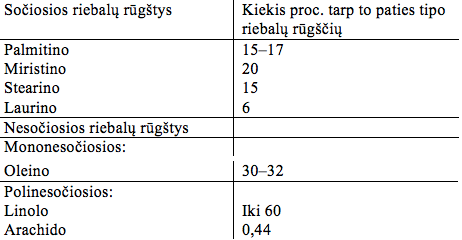Milk
There is a secretion of milk glands. The blood flow in the mammary glands is very intense. It has been determined that for each unit of milk volume secreted, 400 units of blood volume are needed. Therefore, the body’s blood volume during lactation is higher. For example, in lactating cows, blood accounts for about 8.1% of total body mass, while in non-lactating cows, it is about 6.4%.
Two different processes occur in the formation of milk:
Specific components of milk enter the milk from the blood.
Specific milk substances are synthesized in the mammary gland.
The mammary glands are prepared for lactation throughout pregnancy, but milk secretion begins towards the end of pregnancy. Milk is a unique product containing all the nutrients needed for infant nutrition. For example, in one liter of milk, the concentrations of lipids, calcium, phosphorus, and riboflavin meet the daily requirements of these nutrients. In one liter of milk, there is 50% of the protein content needed by an adult per day, 33% of the total required amount of vitamins A, B, and C. One liter of milk satisfies 25% of the daily energy needs. Milk contains enough ions, except for iron, copper, magnesium, and manganese. It contains about 13% of dry matter. Among the dry substances, there are about 250 different compounds – proteins, lipids, carbohydrates, mineral substances, vitamins. In the compounds found in milk, mostly in lipids, there are up to 20 different fatty acids.
The composition of milk depends on the species of the animal, its diet, the method of milk preparation, etc. Milk proteins are well balanced. In one liter of milk, there is as much protein as in 140 g of meat or fish, 5 large eggs, or 800 g of white bread. The composition of milk is quite similar among many mammals, but there are certain differences between species. Milk contains two types of proteins, specific to milk only, and proteins characteristic of both blood and milk. The proteins specific to milk, casein, lactalbumin, are synthesized by mammary gland cells, while the second type of proteins – immunoglobulins and albumins – enter the milk from the blood.
During lactation, when blood plasma proteins are broken down in the mammary glands, the resulting amino acids are used for protein synthesis. Then, 4-5 times more proteins are produced in the mammary glands than are present in the blood plasma. Milk proteins are complete, but the amount of sulfur-containing amino acids (cysteine and methionine) is too low for humans. The biological value of milk proteins is higher than that of plant proteins, accounting for about 85%, while for corn – about 60%, and for beans – about 38%.
Cow’s milk mostly contains casein, accounting for up to 2.5% of the milk mass. Nitrogen in casein makes up 80-82% of all nitrogen in milk proteins. When milk is centrifuged, lipids – cream, are removed from milk, and the remaining part, after acidification, results in casein precipitates. The remaining liquid part is called milk serum. Its protein composition is similar to blood serum proteins. The most important protein in cow’s milk serum is beta-lactalbumin.
Milk composition in percentages

Lactose is the most important disaccharide in milk. Its a and b isomers are found in aqueous solutions, differing in solubility. a-lactose is less soluble than b-lactose. They also differ in taste – b-lactose is sweeter than a-lactose. Lactose isomers can convert into each other.
In dried human milk powder, lactose accounts for as much as 56%, while in cow’s milk powder – 36%. Lactose makes up about 30% of the caloric content of milk. From it, a person gets about 8% of the daily carbohydrate intake.
Lactose intolerance. It is complained by about 5% of all adults worldwide – about 90% of Asians and Africans, among Europeans, this percentage is much lower.
Milk fats are in the form of an emulsion. Among them, there are mostly triglycerides, with few mono- and diglycerides – about 0.5% of the total lipid content.
More than 20 different fatty acids are included in the composition of milk lipids. It has been found that 0.5 liters of cow’s milk contain about 7.4 g of unsaturated and about 14 g of saturated fatty acids. Human milk has more unsaturated fatty acids. Among the long-chain saturated fatty acids in cow’s milk, there are mainly palmitic and stearic acids, among the long-chain unsaturated fatty acids – oleic and linoleic acids.
Main cow’s milk fatty acids

Phospholipids make up a relatively small part of milk lipids – only 0.2-1.0%. Phospholipids form complexes with proteins, so there are quite a few proteins in cream.
Cholesterol in milk is 0.35-0.4%. It is found inside emulsified fat droplets. There is almost no cholesterol in skimmed milk. There is more cholesterol in butter.
Minerals enter milk from the blood. Ca and P ions are about 10 times more in milk than in blood. Milk also contains more potassium and magnesium ions, but less sodium and chlorine.
Main milk minerals, %

The amount of minerals depends on diet, season, place of residence, and milk acidity. Not all substances in milk are ionized. Only potassium, sodium, chloride, and sulfates are fully ionized. Other minerals are colloidal particles (calcium, magnesium, phosphates, and citrates). About 2/3 of the calcium in milk consists of colloidal calcium caseinate phosphate particles. Milk contains dissolved CO2 (up to 20 mg/100 ml). Some of the CO2 evaporates from the milk, while another part forms acidic carbonates – one of the milk’s buffering systems. In addition to carbonates, milk contains phosphate, protein, citrate, and lactate buffering systems, but the buffering capacity of these systems is low, and their buffering properties are weak.
From milk and its products, a person can obtain up to 75% of the daily required calcium intake.
Phosphorus
In one liter of milk, there is 0.7-0.9% phosphorus. This amount corresponds to the daily norm for children and adults. Only 13-19-year-olds, pregnant and lactating mothers need more – about 1.2 g. The ratio of calcium to phosphorus in milk is 1.2:1.0. Milk is a good product to maintain the balance of minerals in the body. It contains almost all the essential minerals for the body, lacking only iron and copper.
Source | Glossary of Most Commonly Used Biomedical Terms and Concepts | Lithuanian University of Health Sciences | Academician Professor Antanas Praškevičius, Professor Laima Ivanovienė
